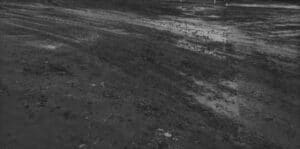What is a Temporary Haul Road
Table of Contents
A temporary haul road is a type of road constructed specifically for use during construction projects to facilitate the movement of materials, machinery, and labor within the site. These roads are designed to handle the heavy traffic typical of construction sites and are built to be removed or repurposed after the project’s completion.
Purpose of Temporary Haul Road
Temporary haul roads are defined as roads that are designed and constructed along a temporary alignment solely for use during construction activities. Their primary purpose is to focus the ground disturbance caused by equipment and vehicles along a specific path, allowing for planned and mitigated erosion and sediment movement in accordance with applicable permits. These roads are essential for managing site traffic efficiently and safely, preventing damage to the surrounding environment, and maintaining accessibility within the site.
Common Construction Features
The design and construction of temporary haul roads involve several considerations to ensure they are effective and safe:
- Location and Layout: The roads should be strategically placed to minimize environmental impact and enhance operational efficiency. They should be wide enough to allow safe passage of vehicles and machinery and include adequate turning radii.
- Surface and Structure: Temporary haul roads often use geotextiles and aggregates to support heavy loads and protect underlying surfaces. Features like water bars, culverts, and rolling dips are incorporated to manage water runoff and control erosion.
- Maintenance and Inspection: Regular inspections are required to ensure the roads remain in good condition and continue to meet safety standards. Adjustments may be made based on these inspections to address any issues such as accumulated sediment or other debris
How are they constructed
Steps in Constructing Temporary Haul Roads
1.0 Site Assessment and Planning:
- Ground Conditions: Assess the existing ground strength, typically expressed as a California Bearing Ratio (CBR), undrained shear strength, or stiffness modulus
- Traffic Load: Determine the anticipated traffic load, including the number and type of vehicles that will use the road
- Environmental Impact: Consider the environmental impact, including erosion control and sediment management
2.0 Design and Layout:
- Geometry: Design the road geometry to accommodate the design speed and vehicle types. Avoid sharp curves and ensure adequate sight distance
- Width and Turning Radii: Ensure the road is wide enough for the vehicles and includes adequate turning radii
- Drainage: Incorporate drainage features to prevent water accumulation and manage runoff
3. Material Selection:
- Granular Fill: Use granular fill or aggregate as the primary material for the road surface. The thickness of the granular layer is determined based on the traffic load and ground condition.
- Geogrids and Geotextiles: Utilize geogrids and geotextiles to reinforce the road and reduce the required thickness of the granular layer
- Alternative Materials: Consider using heavy-duty composite plastic trackway systems or hydraulically bound materials (HBM) for specific applications
4.0 Construction:
- Excavation and Backfilling: Excavate to the required depth (typically 300-600mm) and backfill with the selected materials
- Compaction: Compact the materials to ensure a stable and even surface. This may involve multiple layers of compaction
- Installation of Reinforcement: Install geogrids or geotextiles as needed to provide additional support and stability
5.0 Maintenance and Monitoring:
- Regular Inspections: Conduct regular inspections to identify and address any issues such as surface deformation or rutting
- Adjustments and Repairs: Make necessary adjustments and repairs based on inspection findings to maintain road functionality and safety

Examples of Temporary Haul Road Applications
Construction Sites: Provide access for heavy construction vehicles and equipment
Renewable Energy Projects: Facilitate the construction of wind farms and other renewable energy installations
Events and Temporary Installations: Create access routes for events and other temporary installations
